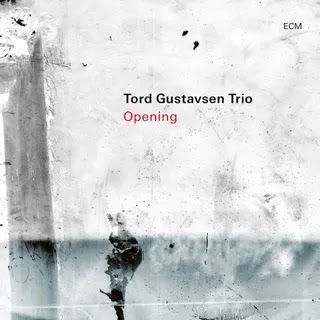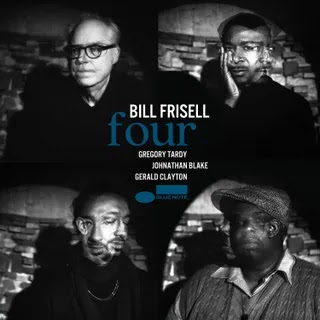The latest work from the Norwegian jazz pianist and composer draws inspiration from classical music and folk songs, but the focus remains on the trio’s delicate and muted interplay.
Since Tord Gustavsen’s debut on ECM almost two decades ago, his songs have offered panoramic, highly-detailed images of his home country Norway. The pianist’s compositions are informed by Norwegian folk melodies and performed in unrushed tempos with an extremely delicate touch; the mood often veers toward ambient by way of jazz, occasionally recalling the vast space and looming melodies of impressionist composer Erik Satie. Adding to the atmosphere is his drummer Jarle Vespestad, who has worked with Gustavsen since his debut and whose soft brushwork and shimmering cymbals evoke the morning after snow.
Gustavsen’s latest album, Opening, brings newcomer bassist Steinar Raknes into the fold, replacing the trio’s previous bassist Sigurd Hole. Raknes performs as if he’s played with these musicians for much longer, providing ample counterpoint while establishing his own voice within the trio. He even takes the lead on the mournful “Helensburgh Tango,” switching from the upright to a bowed bass. The 12 songs on Opening draw on sources ranging from Swedish folk music to Norwegian classical, which the trio approach with a delicate interplay. The musical conversation between Gustavsen and Raknes on centerpiece “Stream” is breathtaking, the improvisation from both musicians rich in melody and poured like dual streams of water, alternatingly merging and branching off. Meanwhile, Vespestad sticks to the background with a muted pulse, adding momentum without distracting.
Elsewhere, Gustavsen reimagines 20th century classical music using modern instruments in “Fløytelåt,” a piece by Norwegian composer Gveirr Tveitt. Had the trio performed the song straight, it would’ve been haunting and slow, well within Gustavsen’s wheelhouse. Instead, he transforms it into a surprising highlight, playing the central melody on an electronic instrument whose haunting tone resembles a muted theremin. The texture conjures an eeriness that the trio would not have been able to reproduce on acoustic instruments, and the spectral atmosphere allows Gustavsen some of the album’s most impressive improvisation.
Gustavsen has always had an omnivorous approach to music, interpolating traditional folk melodies and hymns while incorporating different textures and sounds on each release. Whether through the clamorous fusion of “Ritual” or in the mid-tempo groove of “Shepherd Song,” he seems excited by exploring new possibilities within the confines of the trio. Despite these left turns, however, the focus of Opening remains the playing from Gustavsen and the rich accompaniment from his fellow musicians, creating an atmosphere perfect for a walk by a cabin at dawn, with the sun peeking in through the trees.
















0 comments:
Post a Comment